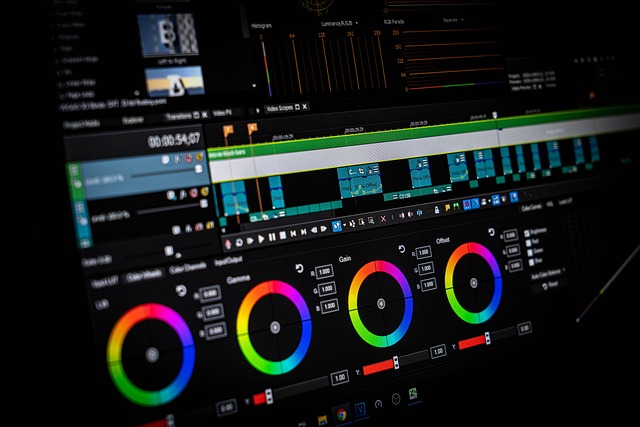It takes constant optimization and development to stay ahead of the competition in the ever changing world of technology. When assessing how well different technology systems work, benchmark software is essential for helping firms make well-informed decisions and spur innovation. As a professional and tech enthusiast, I have investigated the benchmark software market and put together this guide to assist you in selecting the finest solutions for 2024.
The purpose of benchmark software is to evaluate and contrast the functionality of hardware, software, and computer systems. It offers insightful information about the effectiveness, speed, and dependability of different technologies. Benchmark software assists users in finding bottlenecks, improving performance, and making data-driven choices by doing standardized tests and simulations.
Importance of benchmarking in technology and performance evaluation
For both people and corporations, benchmarking is an essential procedure since it makes performance review and improvement identification possible. The significance of benchmarking has increased due to the fast progress of technical developments. By comparing their systems to rivals’ and industry standards, businesses can make sure they can meet the always rising needs.
Businesses can find possible performance gaps and decide on hardware upgrades, software optimizations, and general system enhancements by testing their systems. By locating and fixing inefficiencies, this raises production while cutting expenses. Benchmarking is an essential tool for developers and IT workers since it ensures compatibility and performance across many platforms and devices.
Top benchmark software for 2024
Now that we are aware of the value of benchmarking and the important variables to take into account, let’s look at some of the best benchmark software choices for 2024:
- Geek Bench: The well-known benchmark program Geekbench evaluates the capabilities of memory systems, GPUs, and CPUs. Cross-platform comparisons and detailed results are two of its many features that make it a great option for both people and organizations.
- 3DMark: The industry standard benchmark program for assessing your system’s gaming performance is 3DMark. It assesses your hardware’s graphics capabilities and offers comprehensive information on frame rates, rendering, and the overall gaming experience.
- PCMark: UL developed PCMark with the purpose of benchmarking your PC’s overall performance. It evaluates a number of factors, including as productivity, photo editing, video conferencing, and online surfing, to provide you a comprehensive picture of your system’s capabilities.
- Cinebench: Cinebench is a tool for testing CPU and GPU performance on computers. Professionals in industries including graphic design, video editing, and 3D animation utilize it extensively because it produces precise results and helps maximize performance for resource-intensive jobs.
- PassMark PerformanceTest: This all-inclusive benchmarking program examines a variety of hardware elements, including as CPUs, GPUs, storage units, and network connections. It is appropriate for both inexperienced users and seasoned experts since it provides comprehensive reports and customisable testing.
Performance testing and benchmarking methodologies
Understanding the performance testing methodology is crucial to ensuring reliable benchmarking results. Here are a few often used techniques:
- Simulations of the real world: Using this method, tests are conducted to mimic workload patterns and real-world settings. It offers a more precise evaluation of performance under normal use scenarios.
- Synthetic benchmarks: Synthetic benchmarks concentrate on executing standardized tests and simulations that highlight particular features or parts. They offer a reliable and consistent way to monitor performance, even if they might not accurately represent real-world usage.
- Benchmarks that are specialized to a particular piece of hardware: These benchmarks focus on assessing the performance of certain parts of the hardware, such CPUs, GPUs, and storage units. They aid in locating bottlenecks and enhancing particular system components.
How to interpret benchmarking results
It might be difficult to interpret benchmarking findings since it necessitates a thorough comprehension of the underlying tests and measurements. baseline contrast Compare your system’s performance to industry standards or the benchmark software’s baseline scores. This will assist you in determining how well your system performs in comparison. Determine bottlenecks Look for places where the performance of your system is not as good as others’.
This will assist you in prioritizing optimizations and locating any bottlenecks. Think about the situation consider the particular workload or use situation that prompted the benchmarking. For example, a server environment may not benefit from a benchmark that is centered on gaming performance. Repeatability: To achieve valid comparisons, make sure benchmark testing are carried out using same setups and conditions. This makes it possible for reliable and repeatable
Open-source vs. commercial benchmark software
You may find both commercial and open-source solutions when selecting benchmark software. Here are some things to think about for each:
Software for benchmarking that is open-source:
- Because open-source software is frequently free to use and modify, individuals on a tight budget may find it to be an appealing alternative.
- It is appropriate for developers and expert users alike because it supports community-driven enhancements and modification.
- Open-source software, however, might not have thorough documentation or support, leaving users to rely on internet communities and forums for help.
Commercial benchmark software:
- Professional assistance and frequent upgrades are frequently included with commercial benchmark software, guaranteeing a flawless user experience.
- These software packages are appropriate for both beginning and experienced users since they usually include a greater variety of capabilities and thorough documentation.
- Commercial software, however, may include a price tag, which would make it less affordable for those with limited resources.
The decision between commercial and open-source benchmark software ultimately comes down to your degree of technical proficiency, money, and unique needs.
Conclusion
To sum up, benchmark software is essential for assessing how well different technical systems and parts work. It helps companies and people to remain ahead of the competition, maximize performance, and make data-driven choices. You may select the best benchmark software for your requirements by taking into account elements like accuracy, adaptability, compatibility, and ease of use.
The best benchmarking programs available in 2024 are Geekbench, 3DMark, PCMark, Cinebench, and PassMark PerformanceTest. It is necessary to comprehend benchmarking processes and appropriately analyze data in order to derive significant insights from benchmark software.
Applications for benchmark software may be found in a variety of fields and use cases, such as research, gaming, IT infrastructure, software development, and hardware manufacturing.


